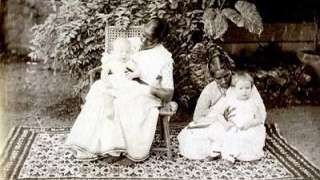MEDIA
Recording the histories of Indian ayahs who travelled the world
www.indianlink.com | November 26, 2020
A new project looks at old links between India and Australia through domestic service and colonisation.
In tracing the relationships between Indians and their colonisers, there’s often one interesting figure who stands out – the Indian ayah. She cared for the children, worked as a lady’s maid, and helped in the running of the household. The best ayahs even travelled with the families, finding themselves in England, Australia, and other colonies.
A new project now aims to collect the histories and experiences of these travelling Indian ayahs.
“History is full of human experiences that have shaped us. Most countries’ histories, including Australia, tends to be bland, focusing on boring outlines of prominent British men or faceless masses. I’m more interested in the marginalised, and their lesser known stories,” explained Newcastle University’s Victoria Haskins, who is leading the project.

Professor Victoria Haskins
Joined by Dr Claire Lowrie from the University of Wollongong and Professor Swapna Banerjee from Brooklyn College of the City University of New York, Victoria’s project is titled Ayahs and Amahs: Transcolonial Servants in Australia and Britain 1780-1945. It looks at domesticity and childcare, things we often take for granted.
“It’s not well valued, even though it’s fundamental to any civilization. Childcare and raising children maintains the social fabric. Even prominent women in history often had others to help raise their kids,” she told Indian Link.
According to the academic, her fascination stems from the idea that the children “grew up loving the very people they were oppressing.”
“I’m constantly amazed at the idea of looking at the people you have colonised and saying, ‘right, now take care of our children’,” Victoria laughed.
Her interest in this field of research began from anecdotes about her great-grandmother’s grandmother, Maggie Hobbes. Maggie was born in India, orphaned, and sent to Scotland to live with family before running away to Australia. Over the years, she had shared many tales of the ayah from her childhood.

Indian ayah with two children. (Supplied)
Of course, Maggie is but one of many old links between India and Australia. Victoria points out another link in Jessie Street, one of Australia’s earliest feminists and advocate for women’s and Aboriginal rights, who came from West Bengal with an ayah.
“We often see two images of the ayah. On one hand, they’re a threat because they’re an outside presence in the house. But they’re also part of the family, even though they’re not kin. In Australia, people really aren’t very comfortable with the history of domestic servants,” Victoria said.
The term ‘ayah’ dates back to the 1850’s and draws its roots from the Portuguese language. A synonymous term ‘amah’ was used for domestic help from Hong Kong and Singapore of Chinese origin.
The project aims to comb through colonial immigration records in Australia, England’s India office records, archives of newspapers, court cases, and some personal records to find the stories of ayahs, but as Victoria puts it, it’s often “a needle in a haystack.”
“The ayahs spoke English, but they were often illiterate and didn’t leave records. How can we hear their stories then?” she asked.

An ayah’s boarding house in Hackney, London. (Supplied)
There’s hints that the ayahs had a semi-organised network, including boarding houses when they were between jobs. Although they didn’t have special legal rights, there’s a feeling they looked out for each other. Some even took their legal action against their employers.
“There was the practice of a ‘loss of caste payment’ when an ayah moved away and left the country. One early account talks about an ayah who took her employer to court when she didn’t receive a payment, and the employer argued that the ayah was Muslim so there wasn’t any argument of caste,” Victoria shared with Indian Link.
Another common practice was getting reference letters from previous employers for their services.
Still, there isn’t a great deal of information available, which makes this project even more important.

Painting of Colonial Blair with his family and ayah. (Supplied)
“Not a lot is known about many Indian families who came to Australia before the White Australia Policy, although there’s some scattered mentions in history,” Victoria admitted.
She highlights an old reference of Indian women working in clothing factories in Redfern, Sydney in the 19th century, and figures like Henry Princep, known as Western Australia’s first Chief Protector of Aborigines, who was raised in India and England before coming to Australia.
“Everyone has a story. I often tell my students ‘everything happened in history’’, so what is it that we choose to remember?” Victoria wondered aloud.
(Source: https://www.indianlink.com.au/india-in-australia/recording-the-histories-of-indian-ayahs-who-travelled-the-world/)

